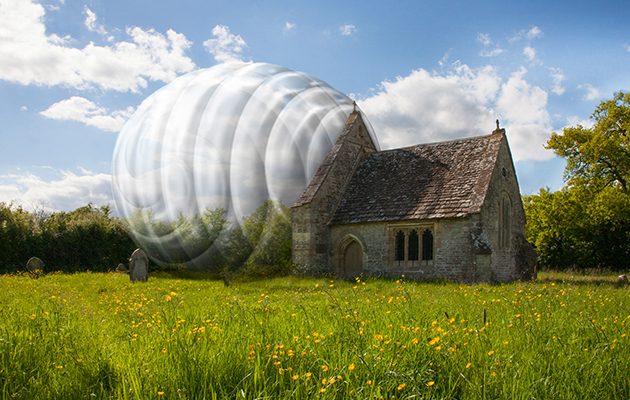Janet Menzies meets Simon Ryder, a Hampshire artist whose latest work-in-progress is as fluid and dynamic as the stretch of the Test at its heart
A fascination with chalk and passion for landscape inevitably turned to an interest in chalkstreams for Simon Ryder. Janet Menzies meets the Hampshire artist, who is on a year-long mission to create a video artwork of the Oakley Beat at Mottisfont. To watch Surface Tension developing and join in, or access Ryder’s previous work, go to: www.simonhryder.wordpress.com.
For more sporting artists, The Monarch of the Glen by Sir Edwin Landseer has been secured for Scotland. And Michael Parker owes his artistic technique to plastering.
SIMON RYDER
Chalk is, of course, literally in every bone of artist Simon Ryder’s body. It is also, metaphorically, in his soul. A Hampshire man, he was recently artist in residence at the Winchester Science Centre and admits: “I am so fascinated by chalk – by the end of the residency I was producing drawings in chalk on blackboard.” This developed into the intriguing Giants of Albion exhibition at Winchester Cathedral in 2015.
Ryder says: “I grew up on the South Downs and I am passionate about that landscape; knowing about the chalkstreams is all part of that.” It was as inevitable as water seeping its way through the chalk to the river that Ryder should eventually arrive at the Test with a year-long mission to create a video artwork of the Oakley Beat at Mottisfont, owned by the National Trust. Although the video aspect of Ryder’s residency will not be shown until next summer, his work is already in progress and available for our examination. In one of those multi-mirrored moments that crop up in installation art, simply by reading and responding to this article, Field readers are now part of the creative process. Ryder explains: “I am already blogging about the work and that will be a part of the project in itself, as will the reactions to that. I am spending all my time at the river, watching and talking to the riverkeeper and the fly-fishers. I am captivated by the Test, there is so much that excites me – the history, the culture and traditions of the river.

Ricochet (2014) is Ryder’s 14 minute video film, using squash players “playing” the cells of the UK’s latest immigration removal centre.
“Although for me it all starts with the chalk, I am fascinated by everything that goes to make up the life of Mottisfont. I began my career as a sculptor and the fishing flies fascinate me – I think their shapes have a sculptural feel. And the whole valley, with the water meadows and the Oakley Beat, is a landscape that has really been created by man. Yet the riverkeeper has been explaining to me what a fragile environment this is.”
Ryder plans to call the finished work Surface Tension and he is finding much to support his initial feelings that the life of the chalkstream is at a turning point. “I can see that lots of the customs of the river are beginning to shift. I have been looking at the work of Eric Ravillious, who painted wonderfully atmospheric watercolours of this area in the middle of the 20th century. Equally, the old Shell travel posters feature fishing on the Test and they capture something special.”
Trying to understand why the whole culture of the Test is so captivating, Ryder is beginning to realise that there is a strongly personal element. “I am passionate about the landscape and the river. I see it on the brink of change and it feels as though my own sense of Englishness is being moved and shifted. It is causing me to question everything I grew up with.”

Giants of Albion (2015) is a collection of blackboard drawings exploring our relationship with chalk.
Ryder finds himself grappling with issues such as culture and society, climate change and land use – all within the context of the life of Mottisfont. “Chalkstreams are sensitive to climate change,” he explains. “The chalk of the South Downs was originally laid down during the Cretaceous period, which was the last period that the earth was very warm. The waters of the Test have arrived there filtered through these ancient aquifers, which is really what makes them unique. So the future of the river is bound up with what happens to the chalk and in climate change – but, of course, we don’t know exactly what that impact will be. These are all perspectives I want to capture in the finished work, to challenge attitudes and perceptions.”
Ryder plans for the project to culminate in a multi-media presentation led by the video that he is now filming. It’s certainly thought provoking, but is it art? Ryder concedes: “Well, no, it isn’t art yet. What I have to do over the next few months is to be receptive to all that I discover. I had a feeling at the beginning of how I would present this landscape but that is already changing and I want to let that develop as I get to know the people on the river – the keepers, the fly- fishers, the visitors.”
Ryder is clearly comfortable with a process that would seem rather unpredictable. But his previous work proves his point. When he does arrive at art, it is worth looking at. His images are unexpected and beautiful, leaping out from slips of video footage, or photographs, or even bits of stone or blackboard. And now Field readers could even find themselves turning into art.





